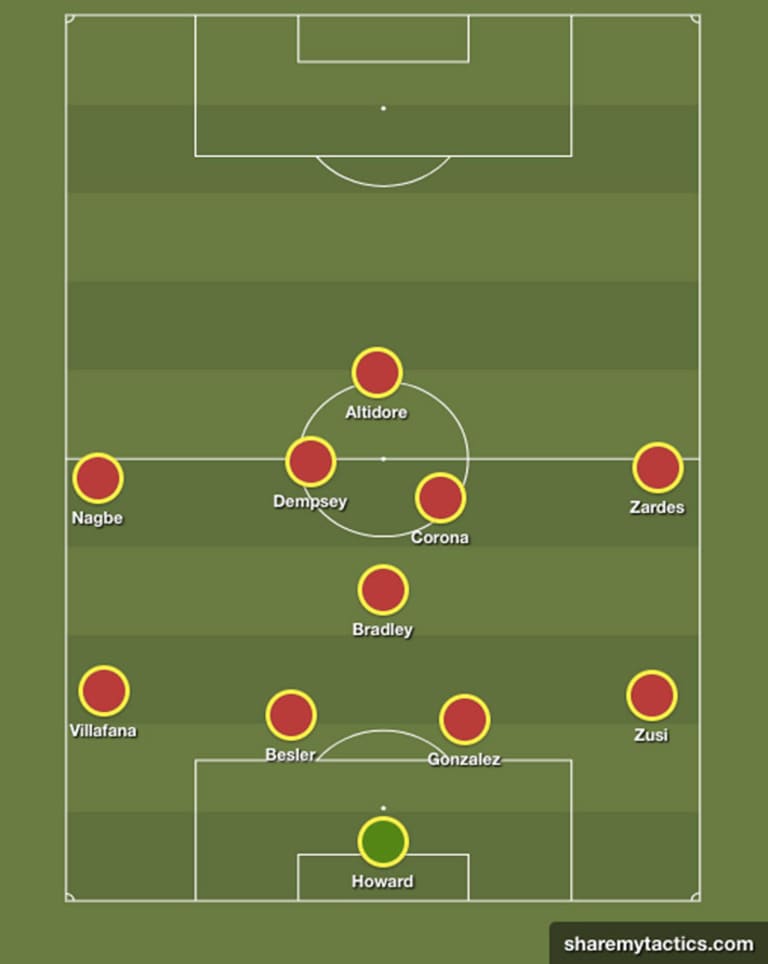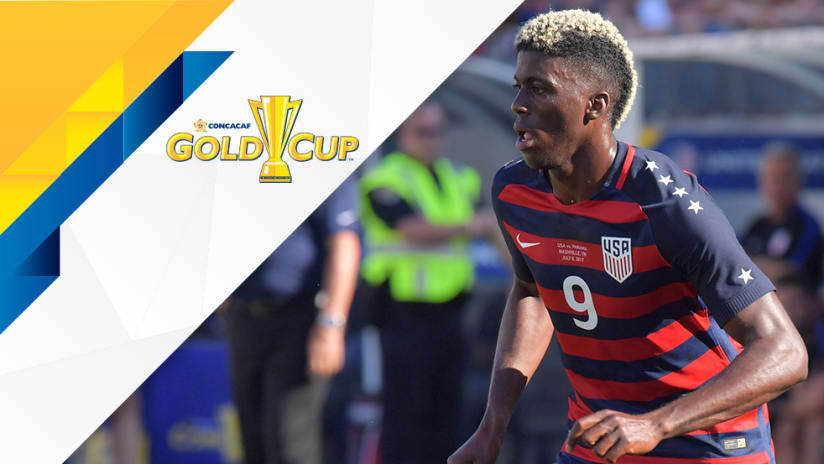It wasn’t necessarily as convincing as we all would’ve liked, but the US national team found a way to finish atop Group B in this year's Gold Cup. And with the arrival of some of the most likely candidates for the World Cup roster now set to bolster the team, it’s up to Bruce Arena to seamlessly integrate the likes of Michael Bradley, Jozy Altidore, Clint Dempsey, Darlington Nagbe, Tim Howard and Jesse Gonzalez into the success the US has already found.
How has the US found most of its success so far?
Whether it was a service from Kelyn Rowe by the corner flag to Dom Dwyer for a goal against Panama or Alejandro Bedoya finding Joe Corona centrally after streaking down the right side against Nicaragua, the US consistently produced goals from out wide. In fact, of the US’s seven goals in Gold Cup, five came out of plays that originated from the wings.
What’s more, the US created a number of additional opportunities from the same circumstances that nearly bumped the team’s total goal tally up from seven— crosses that found the US with three or four players committed in the box and a volley that just went over the net or sequences that began out wide where opponents conceded a penalty kick that the US did not convert.
Regardless of the players coming in for the knockouts, there is no reason to fix what is not broken. The US should continue to play to their strengths in the next stages by finding opportunities to stretch their opponents horizontally apart and let their offensive movement develop from there as they have been.
How the US should setup for the quarterfinals
So how can the US look to capitalize on the productive play from out wide while still finding a way to utilize the quality reinforcements?
The US should go with a 4-1-4-1 like that shown below.

Offensively, this formation would allow Corona or Dempsey to join Altidore when appropriate. The four midfielders would ensure the US cover the width of the field when going forward as both Nagbe and Gyasi Zardes have shown they can make good decisions from those parts of the field and continue to build on what the US have accomplished from out wide as noted above.
Defensively, the four backs are the four backs that have shown they deserve to start going into the next part of the tournament, though it would still be nice to see Eric Lichaj have one more opportunity to show what he can do. And Bradley, playing in a similar capacity to his role with Toronto FC, would sit in front of the two center defenders providing an extra layer of protection. Bradley would be able to pick out any incisive counter attacking passes to spring attackers forward from this position as well.
How the US stack up against El Salvador
If the US continue to be able to play the ball out wide without forcing the issue, this will work even more to the benefit to the squad given El Salvador’s previous matches and the seasoned players joining up with the US Gold Cup team.
El Salvador have surrendered four goals during the tournament— in their 3-1 loss to Mexico, all three of those goals stemmed from play on the flanks and they showed signs of trouble dealing with similar situations against Jamaica.
Additionally, the more spread out the US can force their opponent to become, the more room Altidore and Dempsey will have to operate centrally. The technical ability Dempsey, Altidore and even Corona (as seen in the last match against Nicaragua) have demonstrated if given space will be a tough challenge for the Central American opponents.













